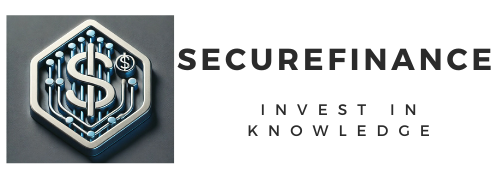
Most pilots and flight attendants in luxury airlines are enrolled in one of two primary retirement plan structures: defined benefit (DB) and defined contribution (DC) plans.
Defined Benefit Plans (Pensions): Often guaranteed by the airline and shaped by years of service and final salary, these are increasingly rare, but still prevalent in legacy and union-heavy carriers.
Defined Contribution Plans (401(k), Roth 401(k), etc.): You contribute, the company matches, and your returns depend on investments.
In luxury carriers—where compensation packages are robust—both types may exist simultaneously. For instance, Emirates may offer DC-style plans while a U.S. legacy luxury airline like Delta or American might offer both a pension and a generous 401(k) match.
Add to that the union negotiations, and these plans become more nuanced than your average corporate benefit structure.
Unique Financial Challenges for Flight Crew
Pilots and cabin crew enjoy higher-than-average incomes. However, this comes with volatility. Flight hours, route changes, sudden layovers, and global events like pandemics or conflicts can suddenly shift income patterns. Additionally:
-
Per Diems vs. Base Pay: Some expenses are covered by the airline, but may not count toward pensionable earnings.
-
Duty-Free Temptations: Airport shopping and lifestyle inflation can nibble away at even disciplined savings.
-
Relocation & Domicile Changes: Affect tax jurisdictions, real estate, and schooling if raising a family.
Retirement Planning for Pilots and Flight Attendants in Luxury Airlines
Luxury airlines like Qatar Airways, Singapore Airlines, and Etihad offer high salaries, excellent perks, and exotic domiciles. But with great perks come complex planning:
-
International Assignments: Affect tax treaties, pension eligibility, and exchange rates.
-
Premium Accommodations: Some airlines provide free housing. What happens when that disappears post-retirement?
-
Generous Loyalty Perks: Free or discounted flights post-retirement—often mistaken as financial backup.
Strategically converting these lifestyle benefits into tangible retirement assets is key. For instance, if your airline offers post-retirement travel, you might downscale your retirement fund earmarked for travel.
Navigating Airline-Sponsored Retirement Plans
Airline-sponsored retirement plans can be both a blessing and a puzzle. Most luxury airlines offer:
-
401(k) and Roth 401(k): Traditional in the U.S., offering tax-deferred or tax-free growth respectively.
-
Profit-Sharing Programs: Some airlines contribute additional amounts based on profitability.
-
Employee Stock Purchase Plans (ESPP): A great perk—if you don’t go overboard. Remember: your income and your investment shouldn’t rely too heavily on one source.
Luxury airline staff should ask HR about international equivalents to these plans if working abroad. For instance, Singapore Airlines crew may have access to CPF (Central Provident Fund) contributions.
Budgeting While Flying High
A common misconception: high earnings = financial stability. Yet, airline professionals often live paycheck to layover. Here’s why:
-
Variable Schedules: Some months are heavy on flight hours, others light. Budgeting must account for dry spells.
-
Spontaneous Expenses: Travel temptations, hotel upgrades, foreign exchange fees.
-
Side Gigs or Bonuses: May be irregular, so shouldn’t be used for recurring expenses.
Using budgeting tools like YNAB or Mint, setting up auto-savings, and following the 50/30/20 rule (needs/wants/savings) can help build discipline.
The Role of Financial Advisors
A Certified Financial Planner (CFP) with aviation experience is a must. They understand:
-
FAA retirement mandates
-
Volatile income planning
-
Pilots’ medical requirements
-
International tax laws
Look for advisors familiar with airline union benefits and pilots’ specific needs. Always choose fiduciaries who act in your best interest—not commission-based advisors.
Saving Strategies for High-Earners
Being a high-income earner allows unique opportunities:
-
Mega Backdoor Roth IRA: For those maxing 401(k)s and still wanting to save more.
-
Health Savings Account (HSA): Triple tax advantage.
-
Deferred Compensation Plans: Offered by some luxury airlines to defer taxes until retirement.
These tools create tax arbitrage—paying less now or later, based on your future bracket.
Pension Plan Portability
Changing airlines? Be wary. Not all pensions are portable.
-
DB plans may not vest until 5 years.
-
Some airlines allow you to cash out—others lock funds until 65.
-
Always roll over into an IRA to avoid penalties.
Speak to a benefits consultant before switching carriers.
Supplemental Income Streams
Retirement isn’t just about stashing cash—it’s about creating income.
-
Real Estate: Buying properties in travel hubs (e.g., Miami, Dubai) offers rental income and familiarity.
-
Consulting: Many pilots teach simulator courses or aviation safety.
-
Online Content Creation: Flight vlogs, travel blogs, and aviation YouTube channels can generate passive income.
Even a modest stream can delay pension withdrawals and grow your nest egg longer.
Investment Strategies During a Flying Career
Long-term investment goals vary, but for aviation professionals:
-
Start aggressive, go conservative: Early-career = stocks. Pre-retirement = bonds.
-
Dollar-cost averaging: Invest monthly to reduce market risk.
-
Index funds over active funds: Lower fees, consistent returns.
Use ESG filters if you value ethical investing—some funds even focus on aerospace innovation.
Tax Planning for International Routes
If you’re flying between multiple countries, here’s what to watch:
-
Residency Rules: You might owe taxes in both countries if not careful.
-
Per Diems: Usually not taxed, but rules vary.
-
Foreign Bank Reporting: U.S. citizens must file FBAR if accounts exceed $10,000.
A cross-border tax accountant is essential to avoid double taxation.
Health Insurance in Retirement
While employed, you’re covered. Post-retirement, you must plan:
-
COBRA Coverage: Expensive but bridges gaps.
-
Marketplace Plans: ACA may be cheaper with subsidies.
-
Travel Insurance: Important for frequent globe-trotters.
Luxury airline retirees may still qualify for international staff insurance or group alumni plans.
Social Security Optimization
Crew members often retire earlier than average. This affects Social Security:
-
Claim early (62): Lower monthly check, longer collection period.
-
Claim late (70): 8% more annually, fewer years to collect.
Use SSA.gov calculators or consult an advisor to time it right.
You Can Also Read : Saving for Supercars: How to Prepare Financially for Luxury Auto Purchases
Dealing with Layoffs and Early Retirement
Aviation can be volatile. Pandemic, mergers, or injury can force early exit.
-
Severance: Usually taxed as ordinary income—consider lump sum investment or debt paydown.
-
Early Withdrawals: IRA or 401(k) withdrawals before 59.5 face a 10% penalty—unless using Rule 72(t) or other exceptions.
Prepare with an emergency fund of at least 6–12 months.
